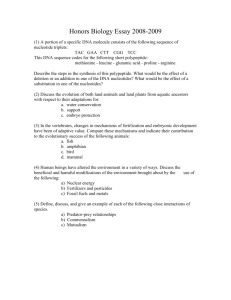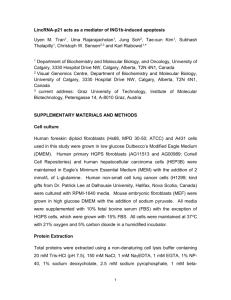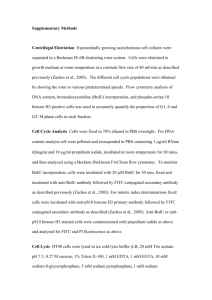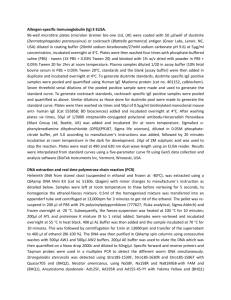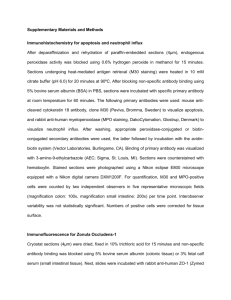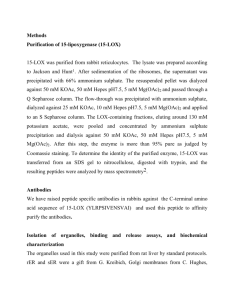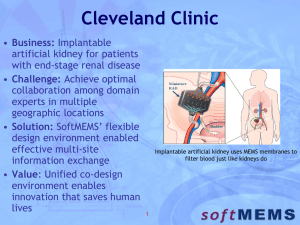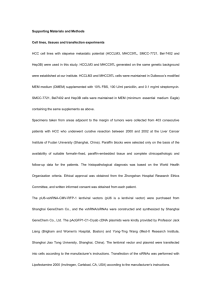Detection and quantification of Damaged DNA
advertisement
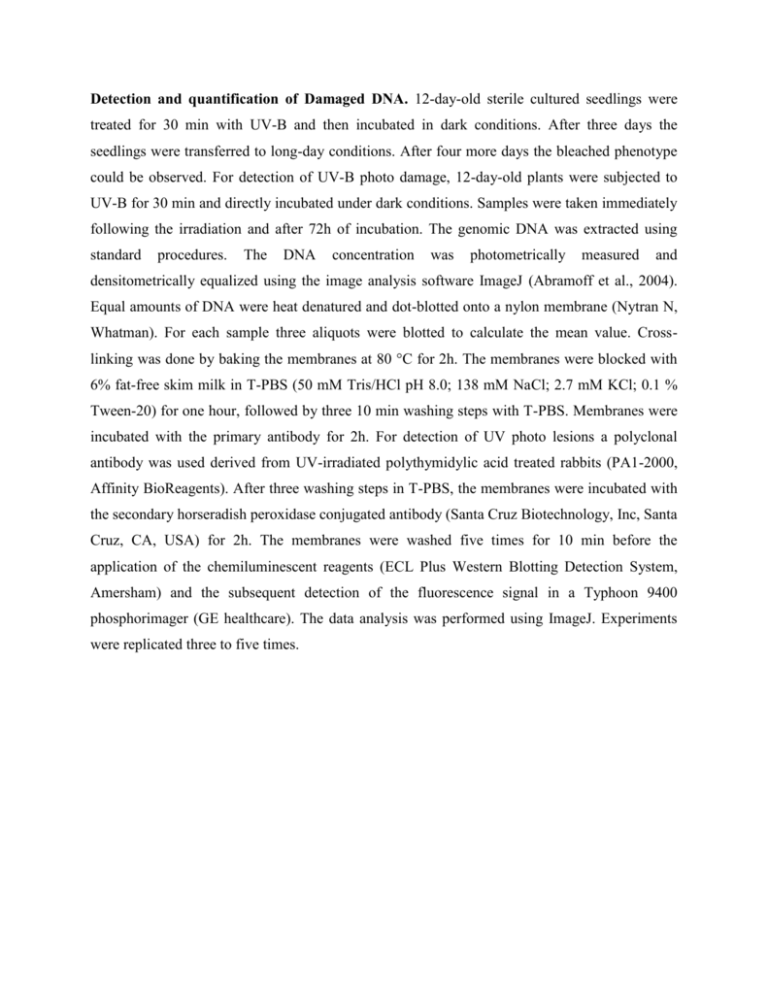
Detection and quantification of Damaged DNA. 12-day-old sterile cultured seedlings were treated for 30 min with UV-B and then incubated in dark conditions. After three days the seedlings were transferred to long-day conditions. After four more days the bleached phenotype could be observed. For detection of UV-B photo damage, 12-day-old plants were subjected to UV-B for 30 min and directly incubated under dark conditions. Samples were taken immediately following the irradiation and after 72h of incubation. The genomic DNA was extracted using standard procedures. The DNA concentration was photometrically measured and densitometrically equalized using the image analysis software ImageJ (Abramoff et al., 2004). Equal amounts of DNA were heat denatured and dot-blotted onto a nylon membrane (Nytran N, Whatman). For each sample three aliquots were blotted to calculate the mean value. Crosslinking was done by baking the membranes at 80 °C for 2h. The membranes were blocked with 6% fat-free skim milk in T-PBS (50 mM Tris/HCl pH 8.0; 138 mM NaCl; 2.7 mM KCl; 0.1 % Tween-20) for one hour, followed by three 10 min washing steps with T-PBS. Membranes were incubated with the primary antibody for 2h. For detection of UV photo lesions a polyclonal antibody was used derived from UV-irradiated polythymidylic acid treated rabbits (PA1-2000, Affinity BioReagents). After three washing steps in T-PBS, the membranes were incubated with the secondary horseradish peroxidase conjugated antibody (Santa Cruz Biotechnology, Inc, Santa Cruz, CA, USA) for 2h. The membranes were washed five times for 10 min before the application of the chemiluminescent reagents (ECL Plus Western Blotting Detection System, Amersham) and the subsequent detection of the fluorescence signal in a Typhoon 9400 phosphorimager (GE healthcare). The data analysis was performed using ImageJ. Experiments were replicated three to five times.
